Aktuelles & Veranstaltungen
Infos zum Semesterstart Sommersemester 2024
Liebe Studierende, herzlich willkommen am Institut für Kunstgeschichte Ostasiens (IKO)! Wir freuen uns Sie im Sommersemester 2024 wieder begrüßen zu dürfen. Bei der Semestereinführung stellt sich das IKO-Team vor und Sie erfahren Näheres zu unserem Kursangebot, Sondervorträgen und weiteren Veranstaltungen.
|
Download: |
Stellenausschreibung
 Studentische/wissenschaftliche Hilfskraft (geprüft/ungeprüft) im IT-Team des Zentrums für Ostasienwissenschaften (ZO) gesucht. [mehr]
Studentische/wissenschaftliche Hilfskraft (geprüft/ungeprüft) im IT-Team des Zentrums für Ostasienwissenschaften (ZO) gesucht. [mehr]
12. Forum Kunstgeschichte Ostasiens
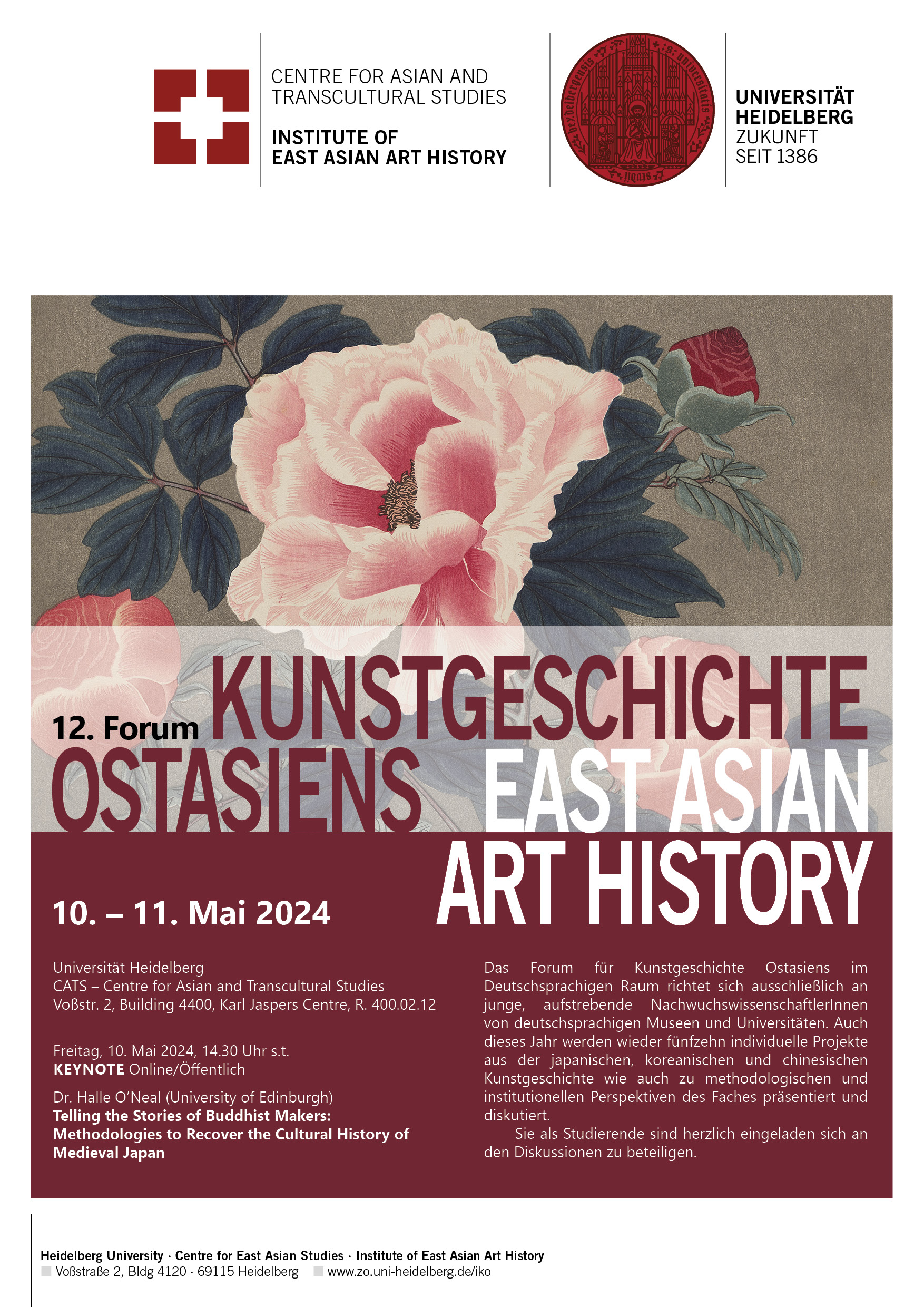 12. Forum Kunstgeschichte Ostasiens
12. Forum Kunstgeschichte Ostasiens
10. – 11. Mai 2024 | CATS R.400.02.12
Das Forum für Kunstgeschichte Ostasiens im deutschsprachigen Raum richtet sich ausschließlich an junge, aufstrebende Nachwuchswissenschaftler:innen von deutschsprachigen Museen und Universitäten. Auch dieses Jahr werden wieder fünfzehn individuelle Projekte aus der japanischen, koreanischen und chinesischen Kunstgeschichte wie auch zu methodologischen und institutionellen Perspektiven des Faches präsentiert und diskutiert. Studierende sind herzlich eingeladen, sich an den Diskussionen zu beteiligen.
Die öffentliche Keynote wird von Dr. Halle O'Neal (Universität Edinburgh) zum Thema „Telling the Stories of Buddhist Makers: Methodologies to Recover the Cultural History of Medieval Japan“ am 10. Mai 2024 um 14:30 Uhr online über Zoom gehalten.
Zoom-Meeting-ID: 693 3849 5260 | Passcode: ForumOAKG
[Poster] [Poster Keynote] [Programm]
Save the date: International Symposium on Narrative Art
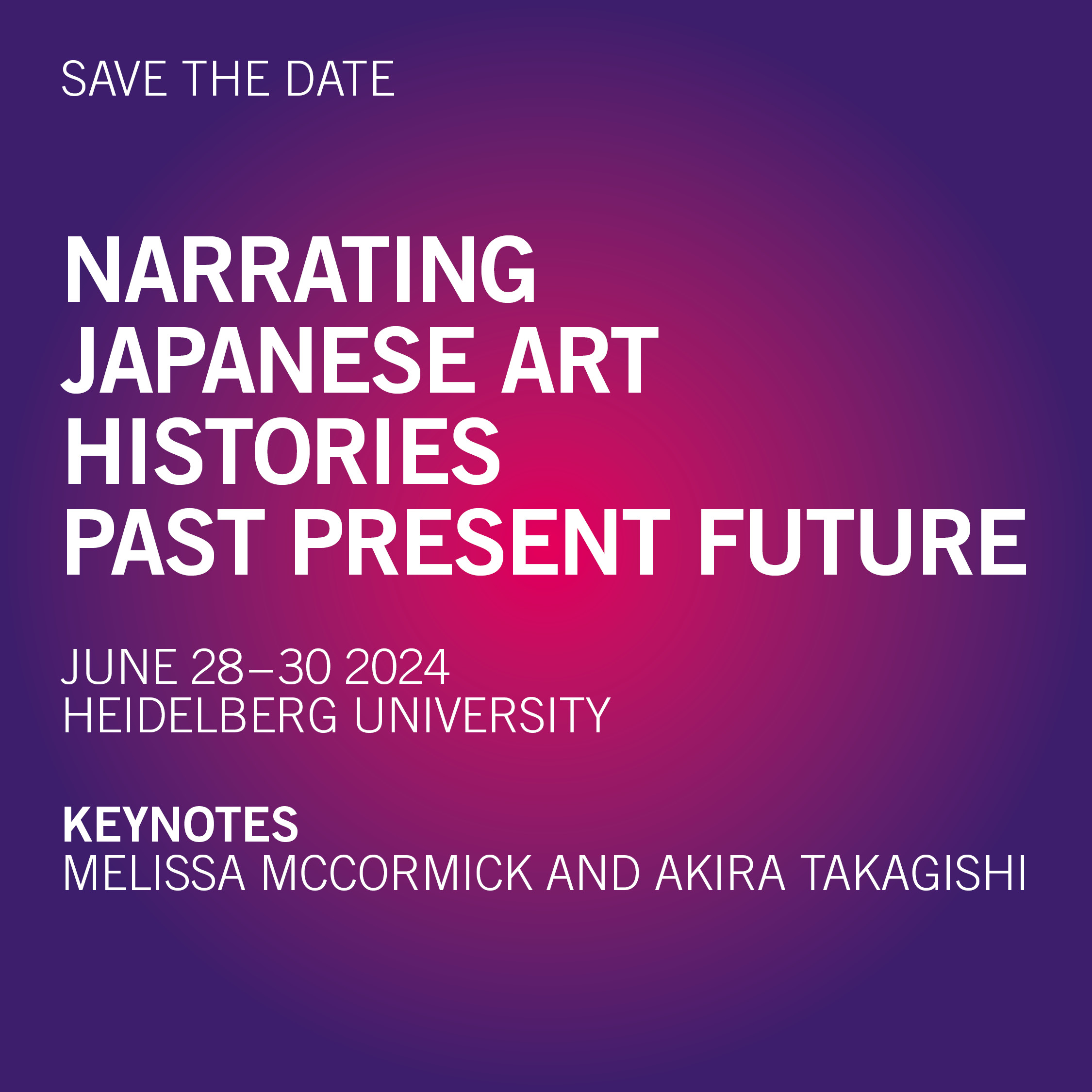 Narrating Japanese Art Histories: Past, Present, Future
Narrating Japanese Art Histories: Past, Present, Future
June 28–30, 2024
This summer, the IKO hosts the international symposium Narrating Japanese Art Histories: Past, Present, and Future in celebration of the twentieth anniversary of collaboration between Ishibashi Foundation and Heidelberg University. We also honor the academic achievements of Professor Dr. Melanie Trede, whose research focused on narrative art. With a prominent line-up of speakers and round table participants, we hope to garner your interest to join us for this wonderful symposium. Prof. Dr. Melissa McCormick (Harvard University) and Prof. Dr. Takagishi Akira (Tokyo University) will be keynote speakers. The conference will be open to the public, and accessible online via Zoom. Stay tuned for further notice on the program and registration link.
Das neue LSF: heiCO
Sämtliche Verwaltung im Bereich Studium wird ab dem kommenden Sommersemester 2024 über heiCO verlaufen. Studierende können sich mit ihrer Uni-ID in ihr perönliches Profil einloggen. Alle Kursarbeiten und Noten werden erst im Mai 2024 migriert.  heiCO
heiCO
Tutorials und Hilfestellungen um sich auf der neuen Plattform zurecht zu finden, können im Folgenden abgerufen werden:
https://www.uni-heidelberg.de/de/heico-downloads
Taiwan Resource Center for Chinese Studies
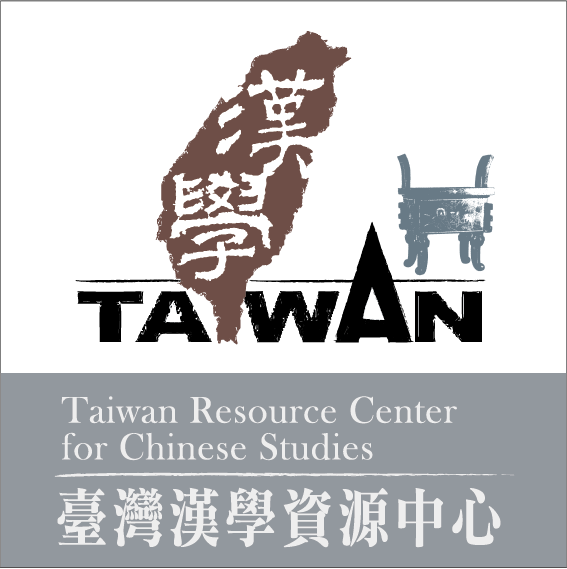 Am 13.12.2022 fand die feierliche Eröffnung des Taiwan Resource Center for Chinese Studies (TRCCS) an der CATS-Bibliothek statt. Im Rahmen dieses Kooperationsabkommens mit der National Central Library in Taiwan wird die Ostasienabteilung der CATS-Bibliothek künftig mit jährlich Hunderten Bänden sinologischer Fachliteratur aus Taiwan versorgt und erhält zudem Zugang zu wichtigen Datenbanken. [Mehr...]
Am 13.12.2022 fand die feierliche Eröffnung des Taiwan Resource Center for Chinese Studies (TRCCS) an der CATS-Bibliothek statt. Im Rahmen dieses Kooperationsabkommens mit der National Central Library in Taiwan wird die Ostasienabteilung der CATS-Bibliothek künftig mit jährlich Hunderten Bänden sinologischer Fachliteratur aus Taiwan versorgt und erhält zudem Zugang zu wichtigen Datenbanken. [Mehr...]
Neue Publikation | Lothar Ledderose: China Schreibt Anders
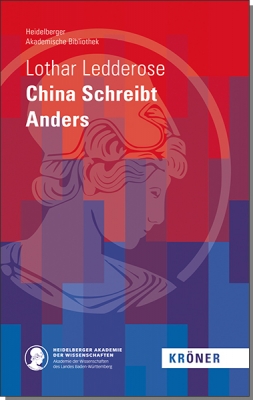 Lothar Ledderose
Lothar Ledderose
China Schreibt Anders
Stuttgart 2021
Erscheint in der Reihe "Heidelberger Akademische Bibliothek".
In einer Zeit, da China immer wichtiger wird, wird es auch immer wichtiger, China zu verstehen. Viel ist da noch zu tun. Die chinesische Schrift ist das komplizierteste System von Formen, welches die Menschheit geschaffen hat, und ein Alleinstellungsmerkmal der chinesischen Kultur. Eine Analyse dieses Systems lässt die grundlegende Andersartigkeit Chinas verstehen, in Erziehung, Religion und Politik. [Weitere Informationen] | [Rezension Süddeutsche Zeitung]
New Publication | A Companion to Korean Art
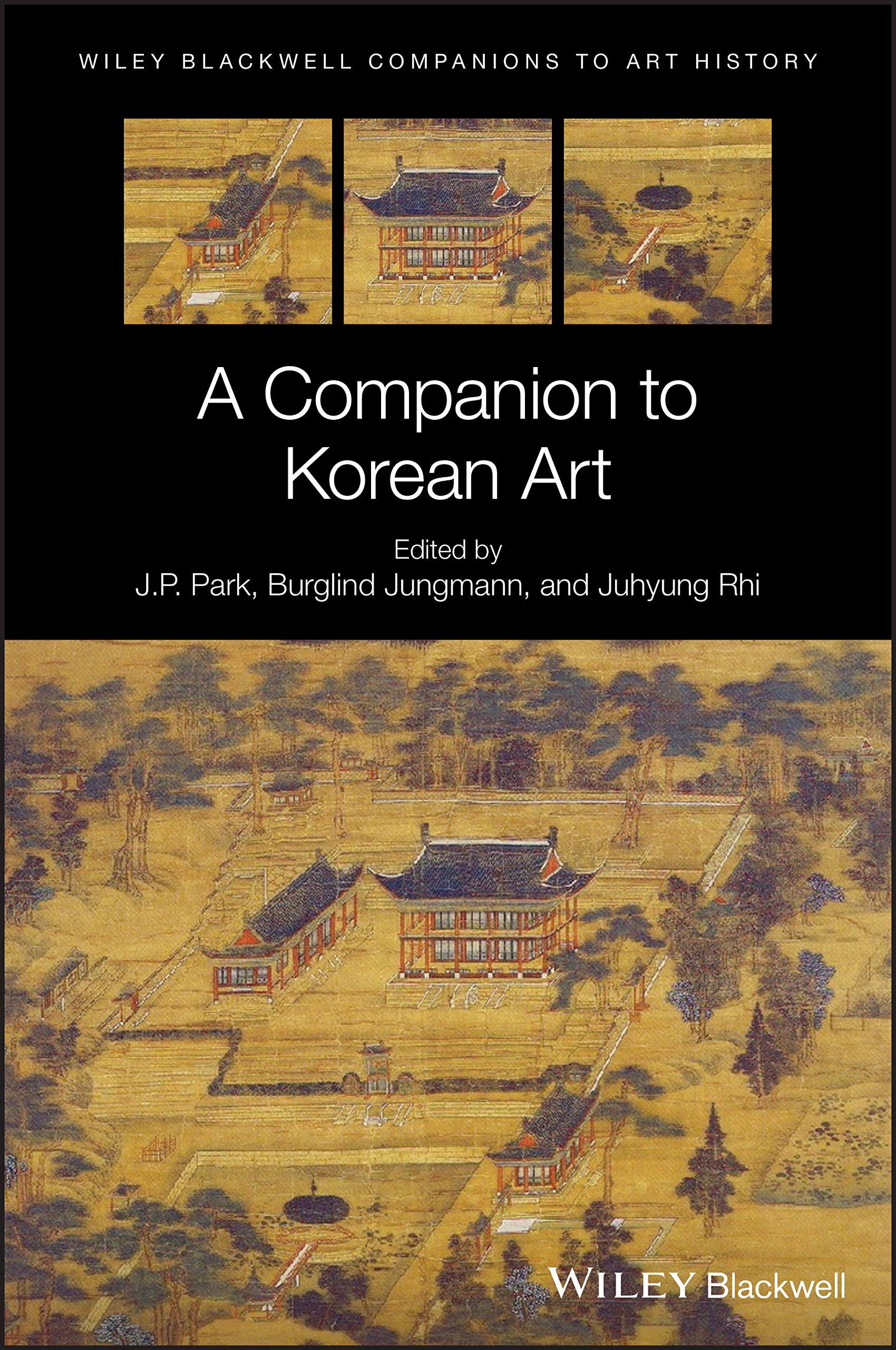 A Companion to Korean Art. Edited by J.P. Park, Burglind Jungmann, and Juhyung Rhi, Wiley-Blackwell 2020
A Companion to Korean Art. Edited by J.P. Park, Burglind Jungmann, and Juhyung Rhi, Wiley-Blackwell 2020
This year the series The Wiley-Blackwell Companions to Art History is expanded to include the first academically researched anthology on the history of Korean art written in English. Our current, eminent scholar of Korean art history, Burglind Jungmann, co-editor of this volume, is not only a graduate of Heidelberg University, but teaches this winter semester 2020/21 a lecture and several seminars on various issues in Korean art history at the IKO.
Korean pop culture has become an international phenomenon in the past few years. The popularity of the nation’s exports—movies, K-pop, fashion, television shows, lifestyle and cosmetics products, to name a few—has never been greater in Western society. Despite this heightened interest in contemporary Korean culture, scholarly Western publications on Korean visual arts are scarce and often outdated. This unique anthology brings together essays by renowned scholars from Korea, the US, and Europe, presenting expert insights and exploring the most recent research in the field.
Insightful chapters discuss Korean art and visual culture from early historical periods to the present. Subjects include the early paintings of Korea, Buddhist architecture, visual art of the late Chosŏn period, postwar Korean Art, South Korean cinema, and more. Several chapters explore the cultural exchange between the Korean peninsula, the Chinese mainland, and the Japanese archipelago, offering new perspectives on Chinese and Japanese art.
The definitive and authoritative reference on the subject, A Companion to Korean Art is indispensable for scholars and academics working in areas of Asian visual arts, university students in Asian and Korean art courses, and general readers interested in the art, culture, and history of Korea. [More Information] [Full access for Heidelberg University members]
Kürzlich rezensiert | Jesuitenerbe in Peking
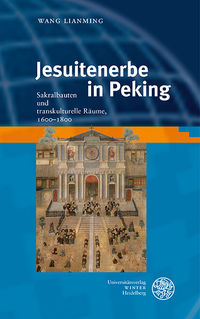 Lianming Wang. Jesuitenerbe in Peking. Sakralbauten und transkulturelle Räume, 1600–1800. Heidelberg, 2020.
Lianming Wang. Jesuitenerbe in Peking. Sakralbauten und transkulturelle Räume, 1600–1800. Heidelberg, 2020.
Dieser Band beschäftigt sich mit dem materiellen Erbe der jesuitischen Mission außerhalb Europas unter Einbezug dreier Pekinger Schlüsselbauwerke. Gestützt auf eine kritische Revision der Baugeschichte, gilt das Interesse zunächst der Transkulturalität und Wirkung der jesuitischen Bautopographie im Kontext flaneuristischer Stadterkundungen. Es gilt insbesondere, die Auswahl der identitätsstiftenden Bautypologien hinsichtlich ihres auf Machtrepräsentation ausgerichteten Mechanismus zu hinterfragen.
Zentral sind des Weiteren Fragen zum Einfluss der jesuitischen Räume auf die kaiserlichen, transkulturellen Machträume sowie die Positionierung der jesuitischen Gartenräume im Zuge transkultureller Wissenschaftsnetzwerkbildung im 17./18. Jahrhundert. Gestützt auf eine Vielzahl von Bildzeugnissen, liefert die Studie einen gründlichen Einblick in die globale Entfaltung der Kunst und Architektur eines historisch bedeutenden Klerikerordens und trägt zur aktuellen Debatte um die globale Kunstgeschichte maßgeblich bei. [weitere Information]
Rezensionen
“Wang’s book offers such a wide range of interesting and useful information on this fascinating period and the transfer of knowledge initiated by the Jesuits that it deserves to be essential reading for everyone dealing with this subject.” Niklas Leverenz in: The Burlington Magazine, 162, 10/2020, 906-907
“[…] Wang’ book promises to advance comparative and interdisciplinary studies on the topic in a stimulating and creative fashion… a broader readership can appreciate this splendid volume for the high quality of factual information, intellectual penetration and historical and systematic reflection.” Hang Lin in: Ostasiatische Zeitschrift, Neue Serie, Nr. 40, Herbst 2020, 58-60
“Wang’s monograph is of course a splendid example of decentering Europe by offering the reader his impressive knowledge of both European and Chinese sacral architecture. While European (and specific Jesuit) decorative and architectural elements were exported to China, Jesuit artistic production itself was deeply influenced by Chinese demand and taste.” R. Po-chia Hsia in: Journal of Jesuit Studies, Vol. 8: Issue 3, 04/2021, 490–500
Neue Publikation | Xu Bing: Beyond the Book from the Sky
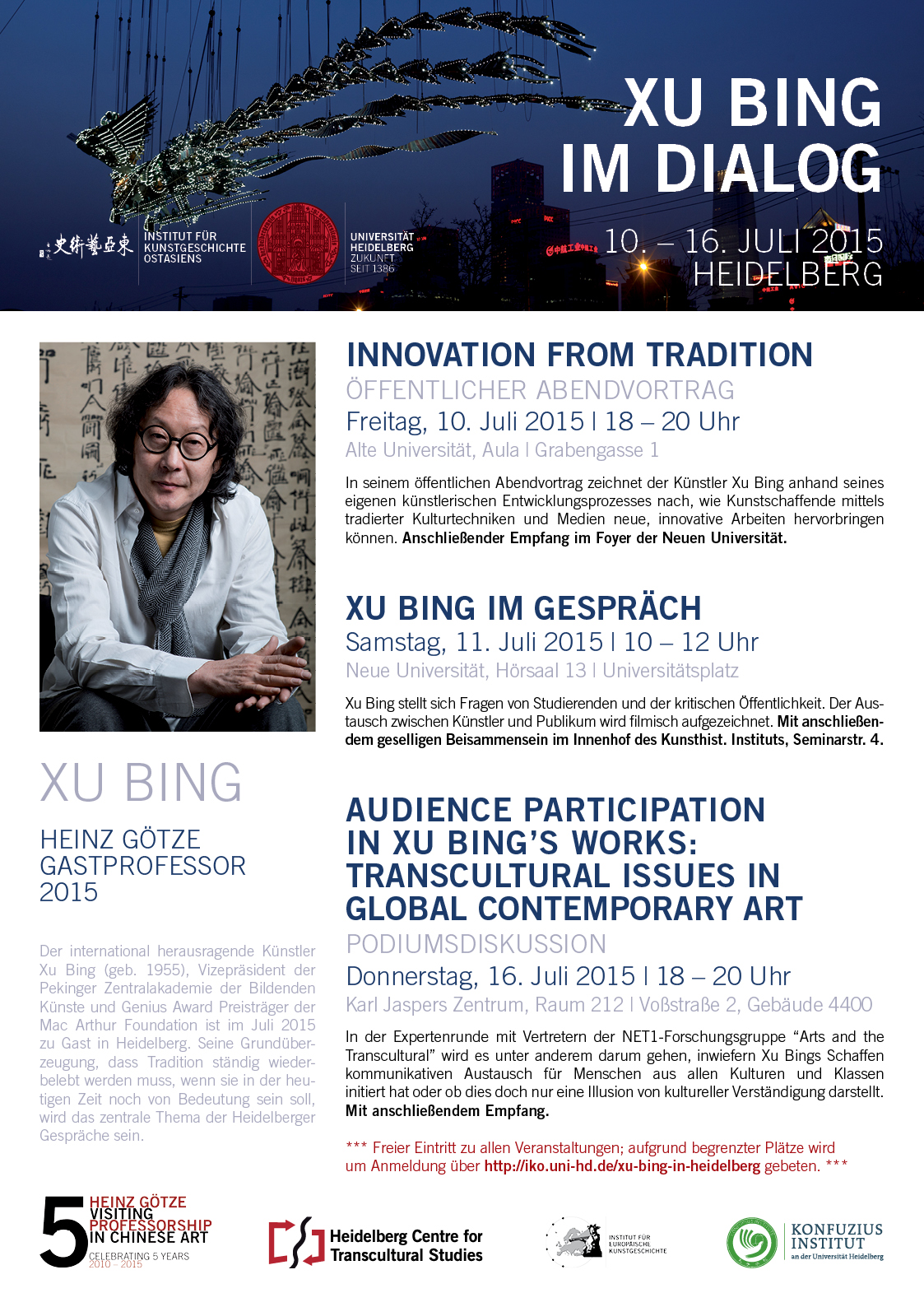 Fraser, Sarah E. and Yu-Chieh Li. Xu Bing: After the Book from the Sky. Singapore: Springer, 2020.
Fraser, Sarah E. and Yu-Chieh Li. Xu Bing: After the Book from the Sky. Singapore: Springer, 2020.
(eBook / Hardcover)
This book takes Xu Bing’s practices after his legendary Book from the Sky as a starting point to assess changes in the social and cultural conditions for art-making and the aesthetic turns in the development of contemporary Chinese art in the past 30 years. The volume contains transcripts of Prof. Xu’s lectures as the 2015 Heidelberg University IKO Heinz Götze Distinguished Professor and eight additional art historical essays. These explore themes such as Xu’s animal works, audience participation, new ink, prints, realism, socialist spectacle, and word play. A critical question addressed in these texts is what carries art to a global level beyond regional histories and cultural symbols. The authors critically re-examining art practices in their multi-layered context. Can Xu Bing’s trajectory be seen as a micro-history of post Cultural Revolution Chinese art? How does the Xu Bing phenomenon relate to other contemporary art practices and discourses?
"Absorbing critical essays on contemporary Chinese aesthetics addressing the social context and philosophical concerns that underlie Xu Bing’s key works. The authors analyze Xu’s art, shedding light on the tangled history of socialism and neoliberalism in the Post-Mao period."
--Prof. Dr. Lothar Ledderose, Senior Professor, Institute of East Asian Art, Universität Heidelberg
Auf ein Akademisches Viertel mit... Melanie Trede
Die Kunsthistorikerin und Japanologin Melanie Trede spricht in der Podcast-Reihe "Auf ein Akademisches Viertel mit..." der Berlin-Brandenburgischen Akademie der Wissenschaften über Querrollen, Brainstormings mit Studierenden und darüber, wie eng Natur, Kunst und Kultur in Japan miteinander verwoben sind. [Reinhören...]












